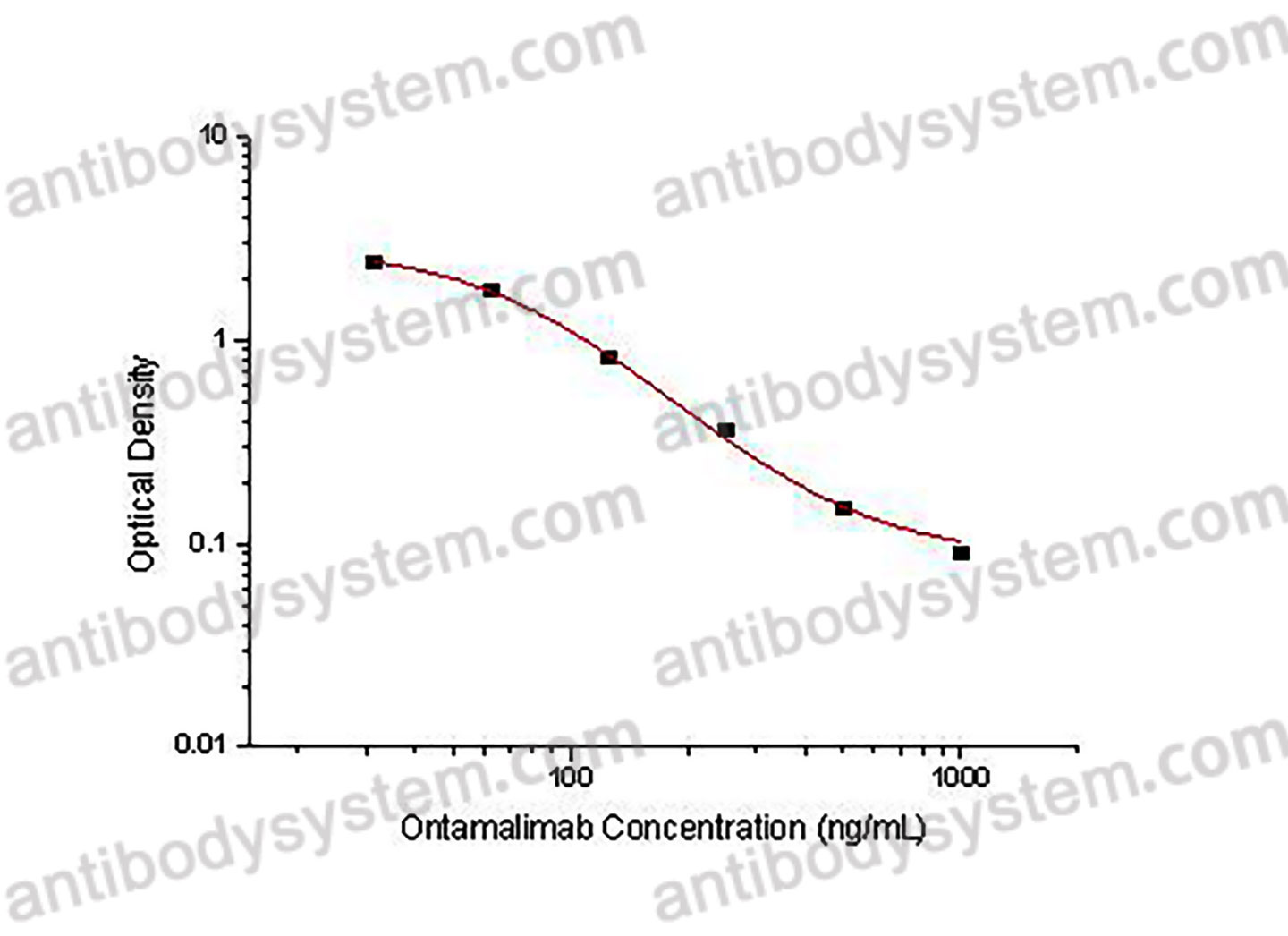Catalog No.
KDG54901
Description
PRINCIPLE OF THE ASSAY This assay employs the quantitative competitive enzyme immunoassay technique. Recombinant Human MADCAM1 has been pre-coated onto a microplate. Standards or samples are premixed with biotin-labeled antibody and then pipetted into the wells. Ontamalimab in the sample competitively binds to the pre-coated protein with biotin-labeled Ontamalimab. After washing away any unbound substances, Streptavidin-HRP is added to the wells. Following a wash to remove any unbound enzyme reagent, a substrate solution is added to the wells and color develops in inversely proportion to the amount of Ontamalimab bound in the initial step. The color development is stopped and the intensity of the color is measured.
Applications
Used for the quantitative determination of Ontamalimab concentration in serum and plasma.
Detection method
Colorimetric
Sample type
Plasma, Serum
Assay type
Quantitative
Range
31.25 - 1,000 ng/mL
Sensitivity
26.93 ng/mL
Precision
Intra-Assay Precision (Precision within an assay): <20%
Three samples of known concentration were tested sixteen times on one plate to assess intra-assay precision.
Inter-Assay Precision (Precision between assays): <20%
Three samples of known concentration were tested in twenty four separate assays to assess inter-assay precision.
|
|
Intra-Assay Precision |
Inter-Assay Precision |
||||
|
Sample |
1 |
2 |
3 |
1 |
2 |
3 |
|
n |
16 |
16 |
16 |
24 |
24 |
24 |
|
Mean (ng/mL) |
682.2 |
142.1 |
43.5 |
705.0 |
136.3 |
39.7 |
|
Standard deviation |
42.6 |
6.5 |
4.0 |
76.6 |
11.9 |
4.7 |
|
CV (%) |
6.2 |
4.6 |
9.1 |
10.9 |
8.7 |
11.9 |
Recovery
80-120%
Shipping
2-8 ℃
Stability and Storage
When the kit was stored at the recommended temperature for 6 months, the signal intensity decreased by less than 20%.
Alternative Names
PF-00547659, PF-547659, SHP647, CAS: 2098790-40-8
Background
Ontamalimab (SHP647) is a fully human, immunoglobulin G2 , antihuman mucosal addressin cell adhesion molecule-1 (MAdCAM-1) monoclonal antibody being developed for the treatment of ulcerative colitis (UC) and Crohn's disease (CD). A population pharmacokinetic/pharmacodynamic (PK/PD) analysis was conducted using clinical phase 2 study data to evaluate the PK and PD of ontamalimab following subcutaneous administrations of 7.5, 22.5, 75, and 225 mg every 4 weeks in patients with moderate to severe UC or CD. A total of 440 patients with UC (n = 249; 56.6%) or CD (n = 191; 43.4%) were included in the analysis. A 2-compartment model with parallel linear and nonlinear elimination adequately characterized concentration-time profiles of ontamalimab. The apparent clearance and volume of distribution were 0.0127 L/h (0.305 L/day) and 6.53 L, respectively. Apparent clearance and volume of distribution were mainly dependent on baseline albumin and body weight, respectively. No differences in the PK properties of ontamalimab were observed between patients with UC or CD. The presence of antidrug antibodies did not impact the PK of ontamalimab. Nonlinear elimination occurred at very low concentrations and was unlikely to contribute to the elimination half-life under steady-state conditions. A linear PK/PD model described the relationship between ontamalimab and free MAdCAM-1. Minimum concentrations of ontamalimab at steady state following 75 mg every 4 weeks were associated with >95% suppression of circulating free MAdCAM-1. The PK/PD properties characterized support phase 3 testing in UC and CD.

